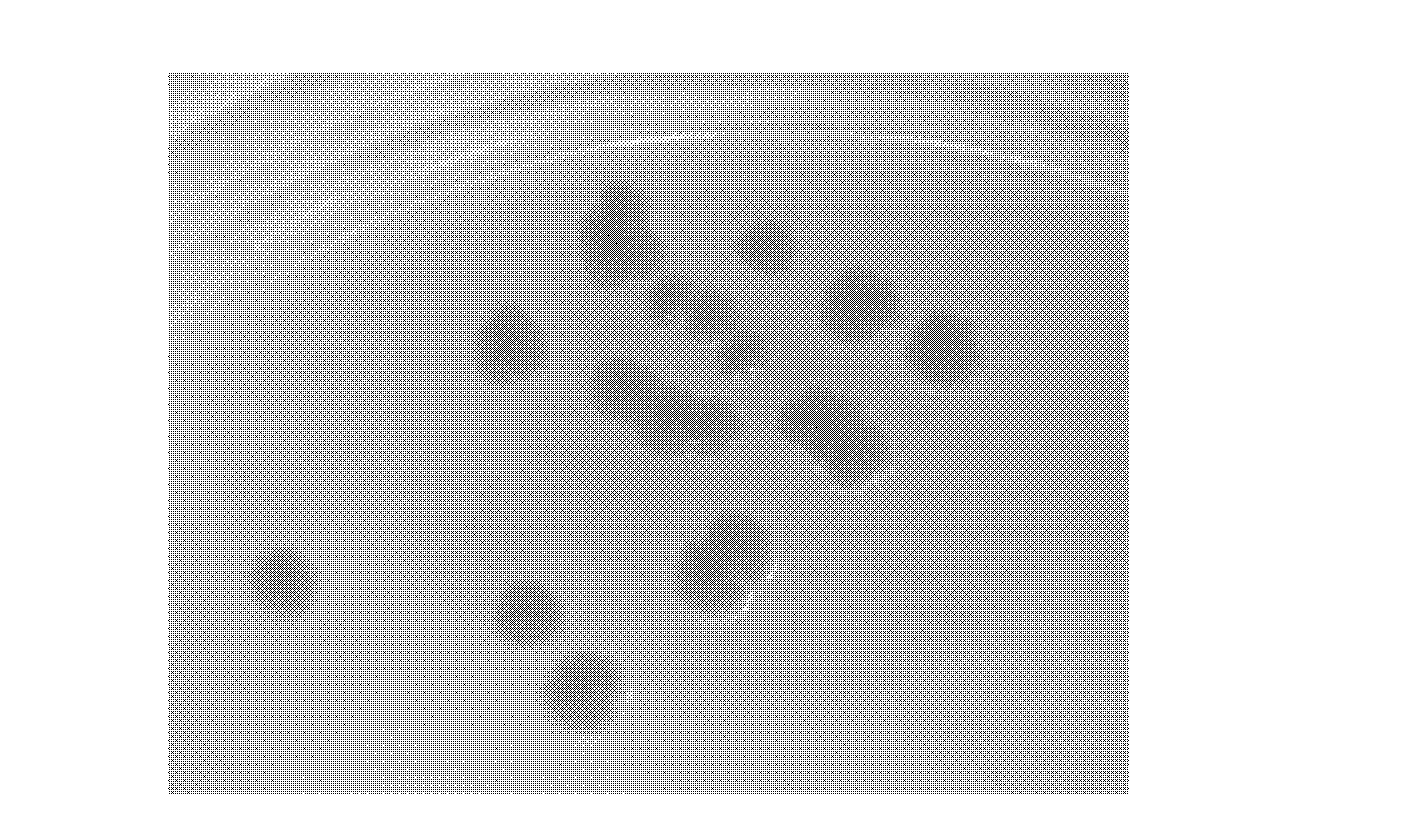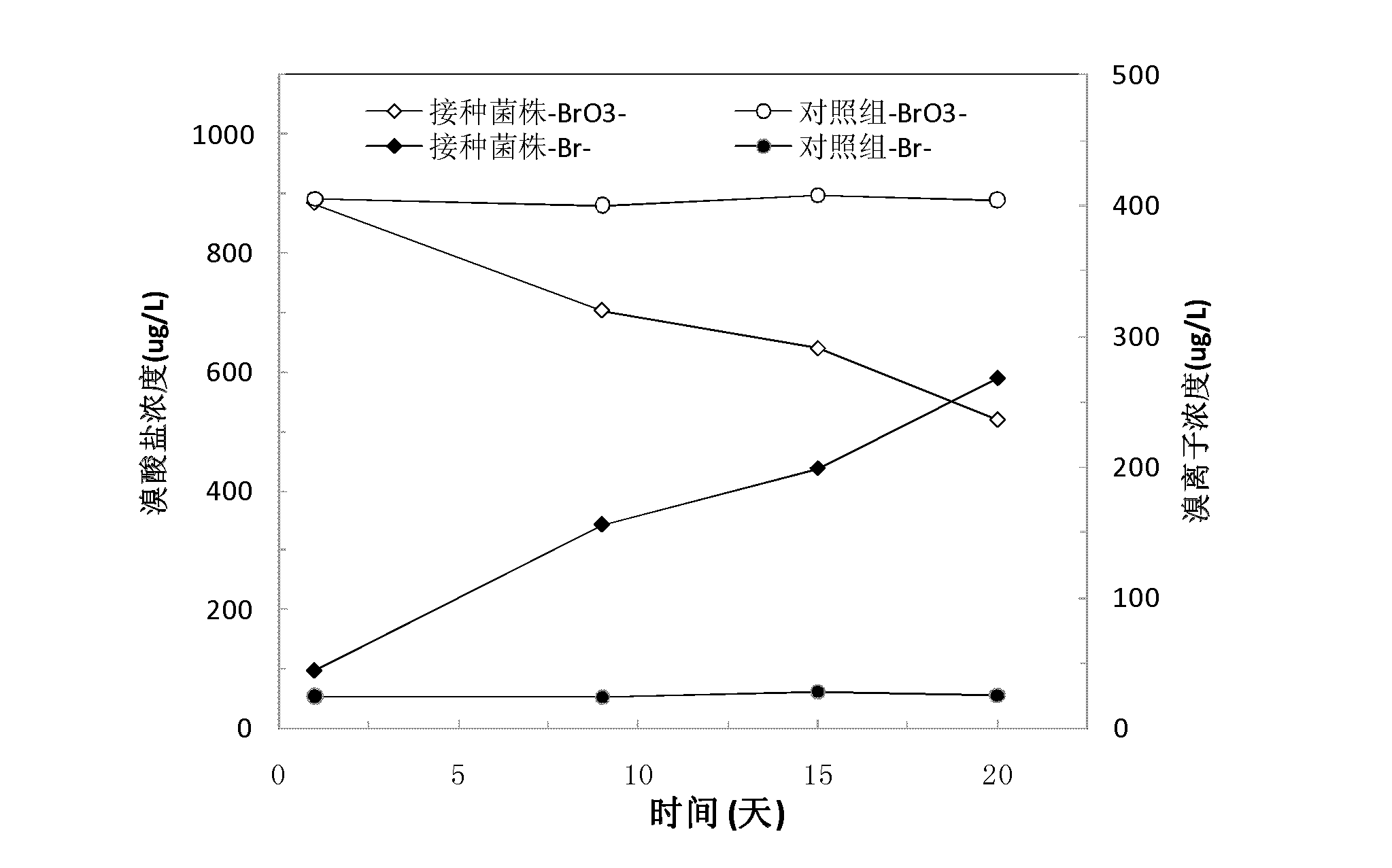Sphingomonas sp.815Y strain for degrading bromate and application of Sphingomonas sp.815Y strain
A sphingomonas and bromate technology, applied in the field of sphingomonas strains and microbial strains, can solve the problems of less progress of bromate, complicated process operation, secondary pollution, etc. Low maintenance cost, reduced carcinogenic toxicity, and fast degradation
- Summary
- Abstract
- Description
- Claims
- Application Information
AI Technical Summary
Problems solved by technology
Method used
Image
Examples
Embodiment 1
[0053] Isolation and purification of embodiment 1 bacterial strain
[0054] 1. Culture medium preparation
[0055] (1) Enrichment medium:
[0056] CaCl 2 5mg, MgCl 2 5 mg, MnCl 2 0.3mg, FeCl 2 0.3mg, ZnCl 2 0.01 mg, H 3 BO 3 0.01mg, CoCl 2 0.005mg, bromate 1mg, sodium acetate 10mg, distilled water 1,000mL, pH 7.0-8.0, and the culture medium was sterilized at 121°C for 20 minutes.
[0057] (2) Separation and purification medium:
[0058] Yeast extract 0.5g, tryptone 0.5g, acid hydrolyzed casein 0.5g, glucose 0.5g, soluble starch 0.5g, K 2 HPO 4 0.3g, MgSO 4 ·7H 2 O 0.05g, sodium pyruvate 0.3g, agar 15g, distilled water 1,000mL, pH 7.0-8.0, and the medium was sterilized at 121°C for 20 minutes.
[0059] (3) LB solid medium
[0060] Tryptone 10g, yeast extract 5g, NaCl 10g, agar 15g, distilled water 1,000mL, pH7.2. The medium was steam sterilized at 15 psi for 20 minutes before use.
[0061] 2. Phosphate buffer
[0062] Phosphate buffer is a mixed solutio...
Embodiment 2
[0069] Research on the microbiological characteristics of embodiment 2 Sphingomonas bacterial strains
[0070] 1. Colony morphology observation
[0071] Streak-inoculate the isolated and purified single-cell strains on LB solid medium, culture at 35°C until colonies grow, and observe the colony morphology. The results are as follows:
[0072] The colony characteristics of the strain are: the diameter of the colony cultivated on the LB plate for 2 days is about 1-2mm, the colony is yellow, moist, drop-shaped, round, raised, opaque, and the edges are neat. Such as figure 1 shown.
[0073] 2. Observation of cell morphology
[0074] The colonies of the strains cultured on LB plates for 2 days were picked, fixed with glutaraldehyde, rinsed with phosphate buffer (pH7.2), dehydrated with gradient ethanol, treated with isoamyl acetate, dried at the critical point of carbon dioxide, sprayed with gold, and After the sample was placed in the observation room, it was scanned by an ele...
Embodiment 3
[0082] 1) Preparation of wet cells of single cell strain Sphingomonas sp.815Y
[0083] Use an inoculation loop to take fresh slant strains of Sphingomonas sp. 815Y, streak and inoculate them on LB solid medium, and cultivate them at 35°C for 2 days to obtain a medium plate with obvious colonies. Obtain fresh Sphingomonas wet cells.
[0084] 2) Bromate removal test
[0085] Pick the wet cells of the strain Sphingomonas sp.815Y and inoculate them in the enriched medium, and cultivate them at 25°C under dark conditions, wherein 0.2g of wet cells are inoculated in every 50mL of the enriched medium; the bromine in the culture medium Salt and bromide ion content adopts ion chromatography to measure according to the method of national standard GB / T 5750.10-2006 (drinking water standard test method disinfection by-product index), and measure the culture medium before inoculation and the 9th day, 15th day after inoculation, The concentration value of bromate and bromide ion in the cu...
PUM
 Login to View More
Login to View More Abstract
Description
Claims
Application Information
 Login to View More
Login to View More - R&D
- Intellectual Property
- Life Sciences
- Materials
- Tech Scout
- Unparalleled Data Quality
- Higher Quality Content
- 60% Fewer Hallucinations
Browse by: Latest US Patents, China's latest patents, Technical Efficacy Thesaurus, Application Domain, Technology Topic, Popular Technical Reports.
© 2025 PatSnap. All rights reserved.Legal|Privacy policy|Modern Slavery Act Transparency Statement|Sitemap|About US| Contact US: help@patsnap.com



